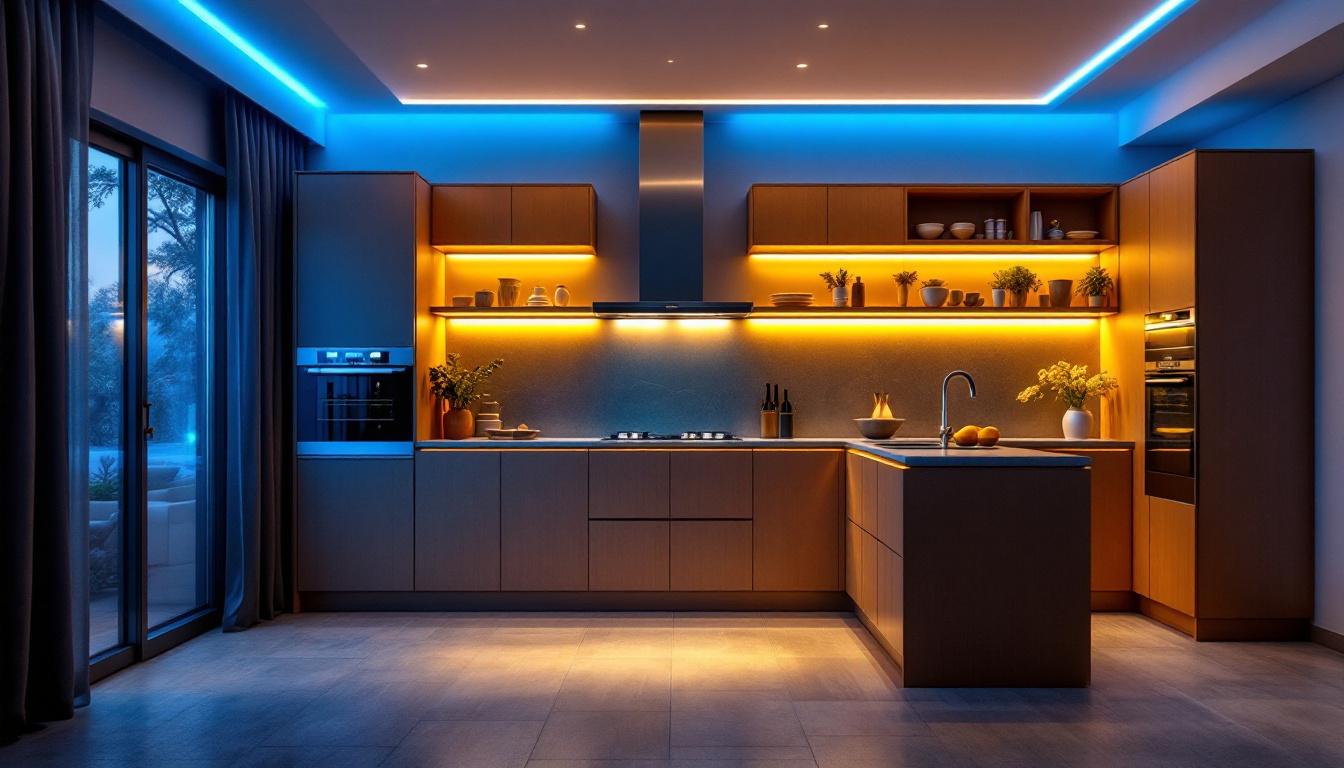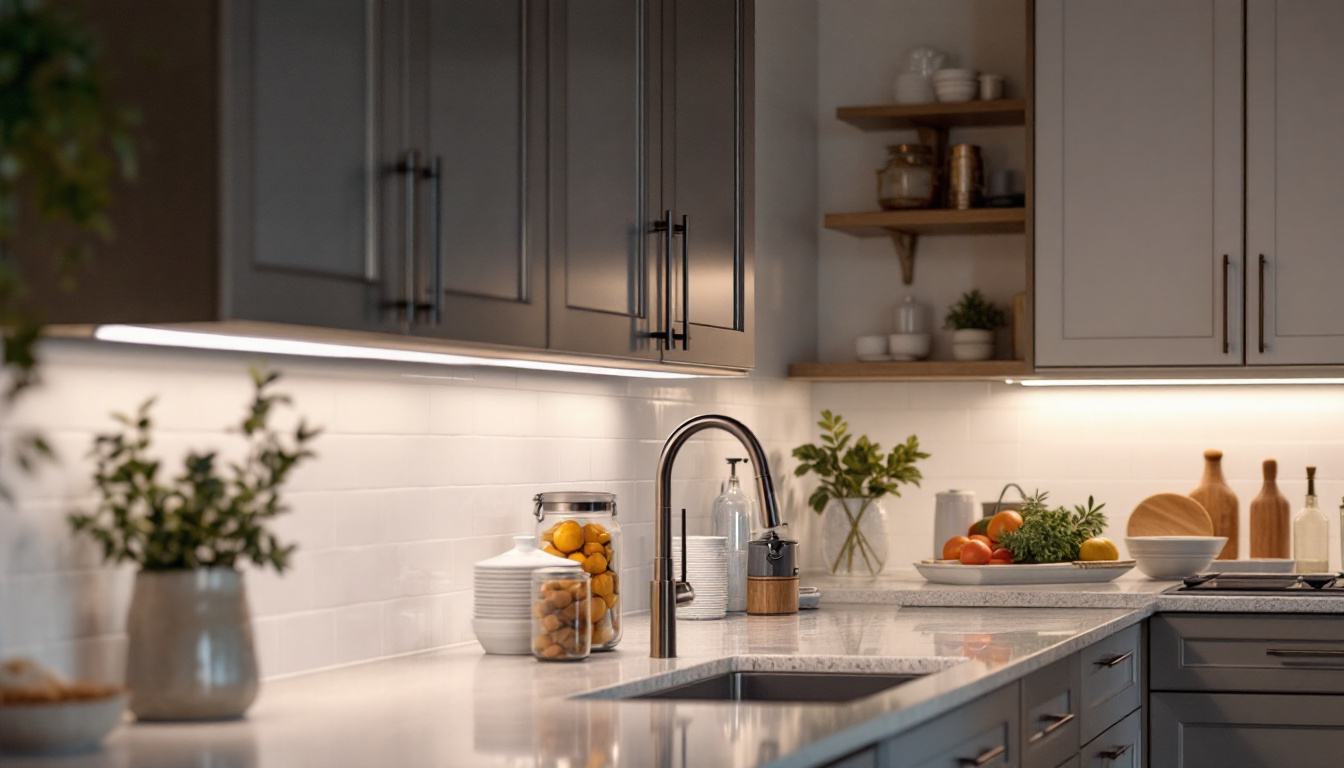
In the realm of modern kitchen design, strip LED lights have emerged as a popular choice for both aesthetics and functionality. They offer flexibility, energy efficiency, and a sleek appearance that can enhance any kitchen space. However, for lighting contractors, the installation of strip LED lights comes with its own set of challenges. Understanding common pitfalls is crucial to delivering a successful project. This guide aims to highlight the mistakes to avoid when working with strip LED lights in kitchens, ensuring a flawless installation that meets client expectations.
Before diving into the common mistakes, it is essential to grasp the fundamental aspects of strip LED lights. These lights consist of multiple LED bulbs mounted on a flexible circuit board, allowing for easy installation in various locations. They are available in different color temperatures, brightness levels, and lengths, making them versatile for any kitchen design. The flexibility of the strip not only facilitates installation in tight spaces but also enables creative designs that can accentuate architectural features or highlight specific areas, such as countertops or cabinets.
Moreover, the energy efficiency of LED lights is a significant advantage, as they consume considerably less power than traditional incandescent or fluorescent bulbs. This means that not only do they save on electricity bills, but they also have a longer lifespan, reducing the frequency of replacements. As a result, strip LED lights have become a popular choice for eco-conscious consumers looking to enhance their living spaces while minimizing their environmental impact.
Strip LED lights come in various types, including standard, waterproof, and RGB options. Standard strips are suitable for most indoor applications, while waterproof variants are ideal for areas exposed to moisture, such as above sinks. Waterproof strips are typically encased in a silicone or plastic coating, providing protection against splashes and humidity, making them perfect for kitchens and bathrooms. RGB strips offer dynamic color-changing capabilities, adding a unique touch to kitchen spaces. These strips can be controlled via remote or smartphone apps, allowing users to customize colors and effects to suit their mood or occasion, transforming a simple kitchen into a vibrant gathering space.
Additionally, there are also dimmable options available, which provide further versatility in setting the right ambiance. Whether you want bright light for cooking or a softer glow for entertaining, dimmable RGB strips can adapt to your needs. The ability to sync these lights with music or other smart home devices enhances their functionality, making them not just a lighting solution but an integral part of the home entertainment experience.
When selecting strip LED lights, several features should be taken into account. Brightness, measured in lumens, is crucial for ensuring adequate illumination. Color temperature, expressed in Kelvin, affects the ambiance; warmer tones create a cozy atmosphere, while cooler tones lend a modern feel. Additionally, the flexibility of the strip allows for creative installations, but it also requires careful planning to avoid common mistakes. It is advisable to measure the installation area accurately and consider the power supply requirements, as some strips may require a specific voltage to function optimally.
Another important feature to consider is the adhesive backing on the strips. While many come with a strong adhesive for easy mounting, the surface to which they are applied must be clean and dry for the best results. Some users may opt for additional mounting clips or channels for a more secure installation, especially in high-traffic areas. Furthermore, understanding the heat dissipation of the strips is essential, as excessive heat can affect performance and longevity. Ensuring proper ventilation and avoiding tight bends in the strip can help maintain its efficiency and lifespan, allowing you to enjoy your lighting solution for years to come.
As a lighting contractor, being aware of the common mistakes associated with strip LED lights can help streamline the installation process and enhance client satisfaction. Below are some of the most frequent errors encountered in kitchen lighting projects.
One of the major pitfalls is failing to plan and measure properly before installation. Accurate measurements are essential to ensure the strip lights fit perfectly in the designated areas. Without precise planning, contractors may end up with strips that are too short or too long, leading to wasted materials and time.
Moreover, it is vital to consider the layout of the kitchen. Identifying key areas that require illumination, such as countertops, islands, and cabinets, will help in determining the optimal placement of the strip lights. A well-thought-out plan can also prevent issues related to uneven lighting.
Another common mistake is neglecting the power supply requirements for strip LED lights. Each strip has a specific voltage and wattage rating that must be adhered to for optimal performance. Failing to match the power supply can lead to dim lighting or, worse, damage to the strips.
It is crucial to calculate the total wattage needed for the entire installation and ensure that the power supply can handle the load. Additionally, using the correct gauge of wire is essential to avoid overheating and potential hazards.
Adhesion is a critical factor in the longevity of strip LED lights. Many contractors make the mistake of not preparing the surface properly before installation. Dust, grease, and moisture can hinder adhesion, causing the strips to peel away over time.
To ensure a strong bond, surfaces should be cleaned thoroughly, and in some cases, a mounting channel may be beneficial for added stability. Additionally, using the right installation technique, such as ensuring the strips are straight and evenly spaced, will enhance the overall appearance and functionality.
While avoiding mistakes is essential, enhancing the aesthetics and functionality of strip LED lights can elevate the kitchen experience. Here are some tips for achieving the best results.
Incorporating a layered lighting design can significantly improve the kitchen’s ambiance. Strip LED lights can be used in conjunction with other lighting sources, such as recessed lights and pendant fixtures. This combination allows for flexibility in lighting levels, catering to various activities from cooking to entertaining.
For instance, placing strip lights under cabinets can provide task lighting for food preparation, while ambient lighting from ceiling fixtures can create a warm and inviting atmosphere during gatherings.
Maintaining color temperature consistency throughout the kitchen is crucial for a cohesive look. Mixing different color temperatures can create an unbalanced and unappealing environment. When selecting strip LED lights, ensure that they match the color temperature of other fixtures in the space.
For example, if the primary lighting source is a warm white bulb, the strip lights should also emit a warm white hue. This consistency not only enhances the aesthetic appeal but also aids in creating a harmonious atmosphere.
Incorporating dimming options can provide greater control over the kitchen’s lighting. Dimmable strip LED lights allow users to adjust the brightness according to their needs, whether it’s for cooking, dining, or entertaining. This versatility can significantly enhance the usability of the kitchen space.
When installing dimmable strips, it is essential to ensure compatibility with the dimmer switch. Not all LED strips are compatible with every dimmer, so it’s crucial to verify specifications before installation.
Safety should always be a top priority when working with electrical installations. Strip LED lights, while generally safe, do require adherence to specific safety standards and practices.
Using proper wiring techniques is essential to prevent electrical hazards. Contractors should ensure that all connections are secure and insulated to avoid short circuits. Additionally, using connectors designed for LED strips can enhance safety and reliability.
It is also important to follow local electrical codes and regulations. Familiarity with these codes can help contractors avoid potential legal issues and ensure the safety of the installation.
LED lights are known for their energy efficiency and low heat output. However, improper installation can lead to overheating, which poses a fire risk. To mitigate this, ensure that the strips are not installed in enclosed spaces without proper ventilation.
Using aluminum channels can help dissipate heat and prolong the lifespan of the LED strips. Additionally, regularly checking the installation for signs of overheating can prevent potential hazards.
Once the strip LED lights have been installed, there are several best practices that contractors should follow to ensure long-term performance and client satisfaction.
Educating clients about the operation and maintenance of their new lighting system is essential. Providing information on how to adjust brightness levels, change color settings (if applicable), and perform basic maintenance can empower clients and enhance their experience.
Additionally, discussing the importance of regular cleaning and inspections can help prolong the life of the strip lights and maintain their appearance.
Providing a warranty for the installation can instill confidence in clients. A warranty not only protects the contractor but also assures the client that they are making a sound investment. Furthermore, offering ongoing support for any issues that may arise can foster a positive relationship and encourage referrals.
Strip LED lights have the potential to transform kitchen spaces, offering both functionality and aesthetic appeal. However, lighting contractors must be mindful of common mistakes to ensure successful installations. By avoiding pitfalls related to planning, power supply, and installation techniques, contractors can deliver exceptional results that meet client expectations.
Incorporating best practices such as layered lighting design, color temperature consistency, and safety considerations will further enhance the effectiveness of strip LED lights. By focusing on education and support post-installation, contractors can build lasting relationships with their clients, ultimately leading to greater success in their lighting projects.
With careful planning and execution, strip LED lights can illuminate kitchens beautifully, making them a valuable addition to any modern home.
Ready to elevate your lighting installations and exceed client expectations? Choose LumenWholesale for your next kitchen project and experience the difference quality lighting makes. Our extensive selection of spec-grade strip LED lights is designed to meet the highest industry standards, ensuring you deliver not just a beautifully lit kitchen but a reliable, high-performance lighting solution. With unbeatable wholesale prices and the convenience of free shipping on bulk orders, LumenWholesale is your go-to source for premium lighting without the premium price tag. Discover wholesale lighting at the best value and make the smart choice for your business and your clients.

Discover the essential insights lighting contractors need to meet client expectations in the evolving world of electrical items.

Discover the history of lightbulb invention and explore innovative ways lighting contractors can leverage modern advancements to cut costs and enhance efficiency.

Explore how solar-powered landscape lighting is transforming the projects of lighting contractors.

Discover essential compliance insights for lighting contractors in our comprehensive guide on under cabinet LED installations.